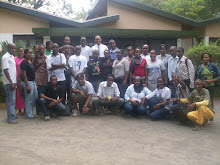“We conserve nature because we live in it, because it is our life, it is the life of our cattle. The conservationists [referring to NCAA] do it because it gives them employment, because they get money from the white men [tourists]. For them, if the white man does not bring money, it is the end of the story. For us, even if the white man does not bring money we will still preserve the environment. We did it before the white men came. We do because it is our lives; it is the life of our ancestors and our unborn children”. This was a statement made by one of Maasai elders when he was being interviewed by the researcher as it reads in Olenasha W. et al 2001 report. This shows the sincerity of indigenous in natural resources conservation. Perhaps if this philosophy was used in conservation we could never have a need to think of firearms in conservation, establishment of WMAs or introduction of YETs programme because we could not have the environmental and natural resource problems we have today.
However from colonial era to date such philosophy has been treated as enemy of environment and conservation and firearms are viewed as the only tool of conservation. Under such viewpoint, Maasai were evicted from Serengeti ecosystem in 1950’s to Ngorongoro by British colonialists. Maasai have never settled up to date. The recent atrocious eviction by the fourth government regime, from Loliondo is evidence. To show that such brutal colonial mechanism can never control the problems of wildlife conservation the elder interviewed added. “Where are all the Rhinos we used to have around? They have disappeared. Your Black government keeps telling us that they are the ones who know how to conserve. They have dismissed our traditional systems. I can only say the day will come when all of us will be forced out and nothing of the remaining Rhinos will be left, not even their bones for one to see”. The report reads.
The introduction of Community Based Wildlife Management (CBWM) in the so called Wildlife Management Areas (WMAs) was thought as an alternative means of conservation that could reconcile the firearm mechanisms with the communities. About 25 WMAs have been and are being established in Tanzania now. The philosophy here is that WMAs will make communities benefit directly from wildlife and that they will become wildlife lovers! That the people who have been evicted from their native habitats, people whose houses have been and are still being bunt by cruel governments to allow wildlife conservation and people whose relative, children livestock and crops are being destroyed by wildlife will now join with their ‘enemies’ to sing the song of conservation. Perhaps it is a good approach. But is it realistic? Is the government truly heartfelt on it or it is another ‘changa la macho’ to the marginalized communities.
Wednesday, June 2, 2010
Subscribe to:
Post Comments (Atom)


Thanks my learned collegue for coming with idea of WMA, it is a good idea want to establish a linkage of sharing benefits of wildlife resources, and community can feel tangible benefit. But my main querry is, idea of WMA is it of community as it stated?? Or is idea brought from somewhere else??? If that the case to what extent local communities have been prepared to cope with the situation?? Those are the main issues we need to think in depth.
ReplyDeleteThe notion of incorporating local communities in conservation has brough in several decades ago, after failure of the previous models (refer to the work of Emirutus Proffoser Murphree of University of Zimbabwe- A CBC a new myth). It is good idea but we need to prepare our community well, so they can understand well rather than making hurry like now.
Stephen Nyagonde